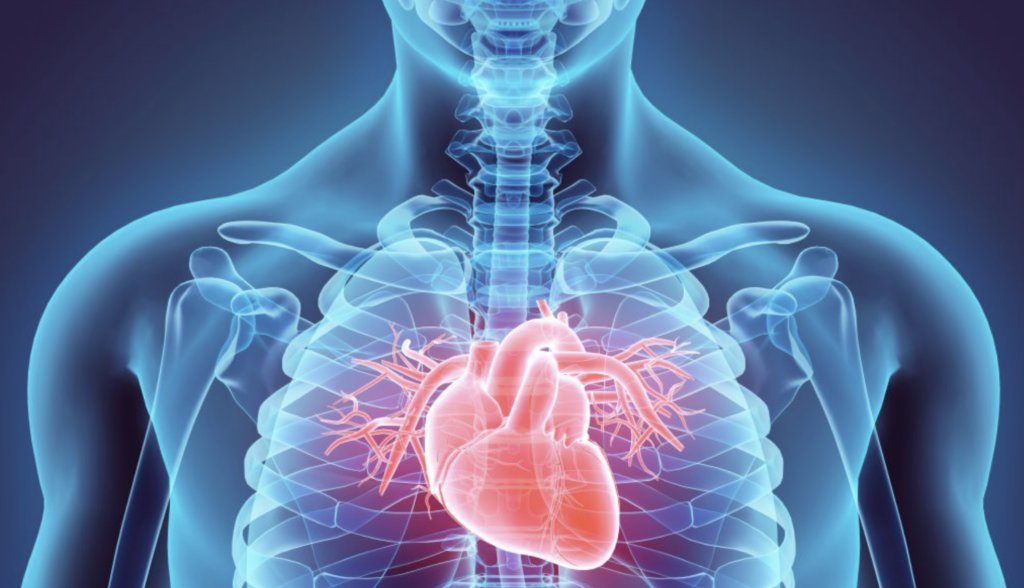What is Arrhythmogenic Cardiomyopathy and What are its Symptoms?

Arrhythmogenic cardiomyopathy (ACM) is a genetic condition that causes damage to the heart muscle and one or both ventricles. The damage replaces the heart muscle tissue with fibrosis scar tissue and fat. It is the second most common cause of death in young athletes.
Arrhythmogenic cardiomyopathy impacts the heart’s normal transmission of electrical signals, which classifies it as a heart rhythm disorder. This condition can lead to heart failure or sudden cardiac death. The risk of sudden death increases with both exercise and age.
There are three types of arrhythmogenic cardiomyopathy based on the location of the damage:
- Arrhythmogenic right ventricular cardiomyopathy: affects the right ventricle
- Left dominant arrhythmogenic cardiomyopathy affects the left ventricle
- Biventricular arrhythmogenic cardiomyopathy: affects both ventricles
It is seen in families and is a genetic disorder. However, some families have a stronger history of arrhythmogenic cardiomyopathy. There is no link between this disorder and environmental conditions. Arrhythmogenic cardiomyopathy doesn’t discriminate; patients of all ethnic backgrounds and nationalities can have this condition. Typically, this heart disease is common in adults in their 20s or 30s. Sometimes this disease presents in children and other times in later adulthood.
Symptoms
Common Symptoms of Arrhythmogenic Cardiomyopathy Include:
- Rapid palpitations
- Sudden loss of consciousness
- Lightheadedness
- Heart failure
- Cardiac arrest
- Inflammation of the heart muscles
- Swelling in the lower limbs
Some patients may have cracks in the skin of their palms and feet, brittle and/or kinky hair, and changes in their teeth.
Arrhythmogenic Cardiomyopathy Diagnosis & Treatment
Arrhythmogenic cardiomyopathy resembles other heart disorders. Because of the similarities, misdiagnosing this condition is, unfortunately, common. For an accurate diagnosis, a physician will complete a physical exam and perform imaging tests of the heart. If possible, they will also perform genetic testing. Physicians may choose to skip the genetic test if patients have a documented history of family members with the condition. If a patient’s genetic testing comes back as positive, the physician may need to encourage relatives to get tested for the disorder as well.
Arrhythmogenic Cardiomyopathy and Heart Transplantation
The only cure for arrhythmogenic cardiomyopathy is heart transplantation, but physicians can offer symptom management options. Physicians will focus on restoring heart rhythm and management of Heart Disease and Heart Failure symptoms. After the initial diagnosis, patients may not need treatment management if the symptoms do not worsen with time. Patients can go on beta-blocker medications or receive an implantable cardioverter-defibrillator to regulate heart rhythm, and, most importantly reduce or eliminate their endurance exercise activity.
Cardiovascular Research & Training Institute
At the Cardiovascular Research and Training Institute (CVRTI) researchers are interested in understanding the fundamental mechanisms underlying the risk of sudden death in arrhythmogenic cardiomyopathy . Using gene therapy techniques, researchers at CVRTI are developing strategies to rescue the disease in model systems. Investigators use state of the art electrocardiography and echocardiography to characterize the disease progression and response to treatment. In order to translate the findings to patients, Investigators have access to donated heart tissues to study and compare their results in model systems to patient’s heart with the disease. Researchers at CVRTI are rapidly developing new solutions and treatment options for patients with arrhythmogenic cardiomyopathy. Ongoing research at the CVRTI aims to improve outcomes for patients with this disease.


